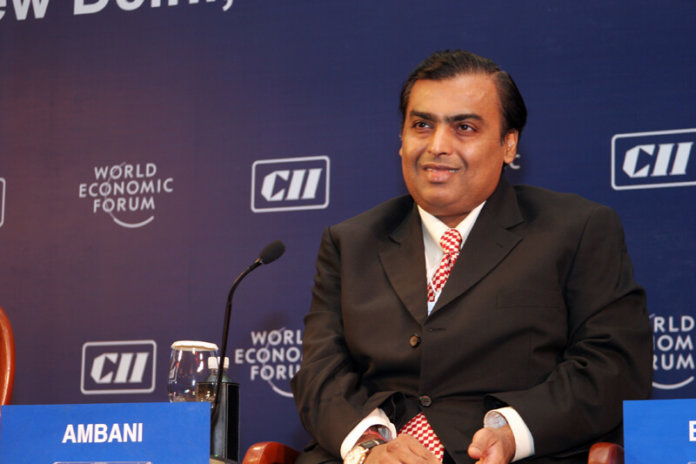
A common joke on Dalal Street, Mumbai’s equivalent to Wall Street, is that the Indian economy can be summed up by a transition from being self-reliant to Reliance. For those of us who fail to see the humor, the joke is a reference to the astounding success of Reliance Industries Ltd, the largest private-sector company in India. Founded in 1966 by Dhirubhai H. Ambani, Reliance has grown into the single biggest corporate success story since India’s independence. From its textile origins to a portfolio that now includes petrochemicals, Reliance generates revenues of $19.97 billion, or more than 3% of India’s total GDP.
However, the modern history of Reliance is defined by its continued success despite a bitter feud between Ambani’s sons, Mukesh and Anil, a split that extended to the company itself, ultimately dividing its operations in two. Understanding the factors that led to the breakup of the Ambani brothers is crucial in order to fully understand the impact of a decision that has had ramifications throughout India’s business world and beyond.
The Growth of Reliance
The early history of Reliance can very easily be summed up as a rags-to-riches story. Dhirubhai Ambani was a gas station clerk in the Aden Province who managed to work his way up to become the marketing manager at Burnah Shell. He would then make brief forays into insurance and the importing business, bringing goods into Aden, including spices and fabrics. Textiles would prove to be lucrative, and Dhirubhai was adept at developing relationships with political figures in India for the benefit of his business. In 1966, he would enter textile manufacturing, and despite going into competition with his own customers, Dhirubhai experienced quick success.
At the time, the economic climate in India was dominated by a few powerful families that received significant support from the government. Dhirubhai forcing him to do something revolutionary in turning to the stock market for venture capital. The IPO of 2.8 million shares, raised $1.8 million, and many credit it for setting the stage for India’s current status as a major industrial center by breaking the trend of relying on the state for capital investment.
The 1980s would mark the arrival of Ambani’s two sons, Mukesh and Anil, into the family business following their education in the United States. They would play a major role in continuing the concept of backward integration that has driven the company’s success, moving to produce the petrochemicals that made the textile yarns they were manufacturing. While the state had originally had a tight grip over the oil sector, a nationwide industry collapse in 1997 forced them to liberalize it, and Reliance was ready to take action, spending $6 billion to build one of the world’s largest and most modern oil refineries in Jamnagar, Gujarat.
The Ambani Brothers Split
Following a stroke in 1986 that left Dhirubhai Ambani partially paralyzed, his two sons would take over the day-to-day operations of Reliance, but he would stay chairman and guide the company in its new direction until dying in 2002 from another massive stroke. Having not left a will for the company, the power struggle for control started nearly instantly, with elder son Mukesh becoming Chairman and Managing Director of Reliance Industries Ltd. while Anil became Vice Chairman. In that same year, Mukesh reportedly attempted to get this brother ousted from the board.
The exact dynamics at play here were unknown, but while the brothers complemented each other well in business, in terms of personality, those close to them say they could not be more different. Mukesh was known as a low-profile, serious, workaholic with an amazing eye for detail. He planned and oversaw the construction of the Jamnagar refinery as well as Reliance Intercom. Anil, on the other hand, was a far more flashy, urbane individual, whose innovations in the Indian capital markets and status as the face of the company helped raise capital in foreign markets for Reliance. However, this same high-profile lifestyle is believed to be the initial cause of the friction between the two.
With the bad blood boiling between the two brothers, what was taking place behind closed doors soon became public in 2004 when, in an interview with CNBC, Mukesh explained, “Well, there are issues which are ownership issues. These are in the private domain, but as far as Reliance is concerned it is a very-very strong professional company.” Following the media frenzy that ensued, their mother Kokilaben intervened and arranged a demerger of Reliance Industries. In the end, Mukesh Ambani got Reliance Industries and IPCL, while Anil got control of Reliance Infocomm, Reliance Energy and Reliance Capital, despite a number of complaints by shareholders who claimed that this was a decision that suited the family more than the business.
An Uneasy Truce
The demerger would not serve as the end of their public feud, however. Several lawsuits and accusations have been flung back and forth between the brothers in the years following, including a $2.12 billion defamation suit Anil filed against Mukesh for remarks he made to The New York Times. These remarks suggested that Anil had overseen an “intelligence agency” assigned to gather information on India’s rich and powerful. In 2009, Anil would fire back that his brother’s company was responsible for power outages across India. Soon, Anil began taking out daily advertisements in the Times of India, India’s largest newspaper, and 32 other papers alleging that the Indian government had sided with Mukesh’s Reliance Industries to raise the price of gas. At one point, the spat became so fierce that the Finance Minister of India himself requested that the brothers solve their dispute privately, out of fear for the markets.
In 2010, the family’s matriarch Kokilaben would get involved again, brokering another peace agreement to replace the earlier one. Anil would go on to say that the feud was resolved later that year, and withdrew his defamation suit against Mukesh. However, rumors of Mukesh’s entrance into the financial sector have inflamed worries that the two brothers will lock horns again, as Anil’s Reliance Capital already has a sizeable foothold in that market. Only time will tell whether the two brothers have settled their conflict for good or they are merely in the eye of the storm, but one thing is for sure; the stability of India’s largest company and India’s greater economy hangs in the balance of this powerful family.









